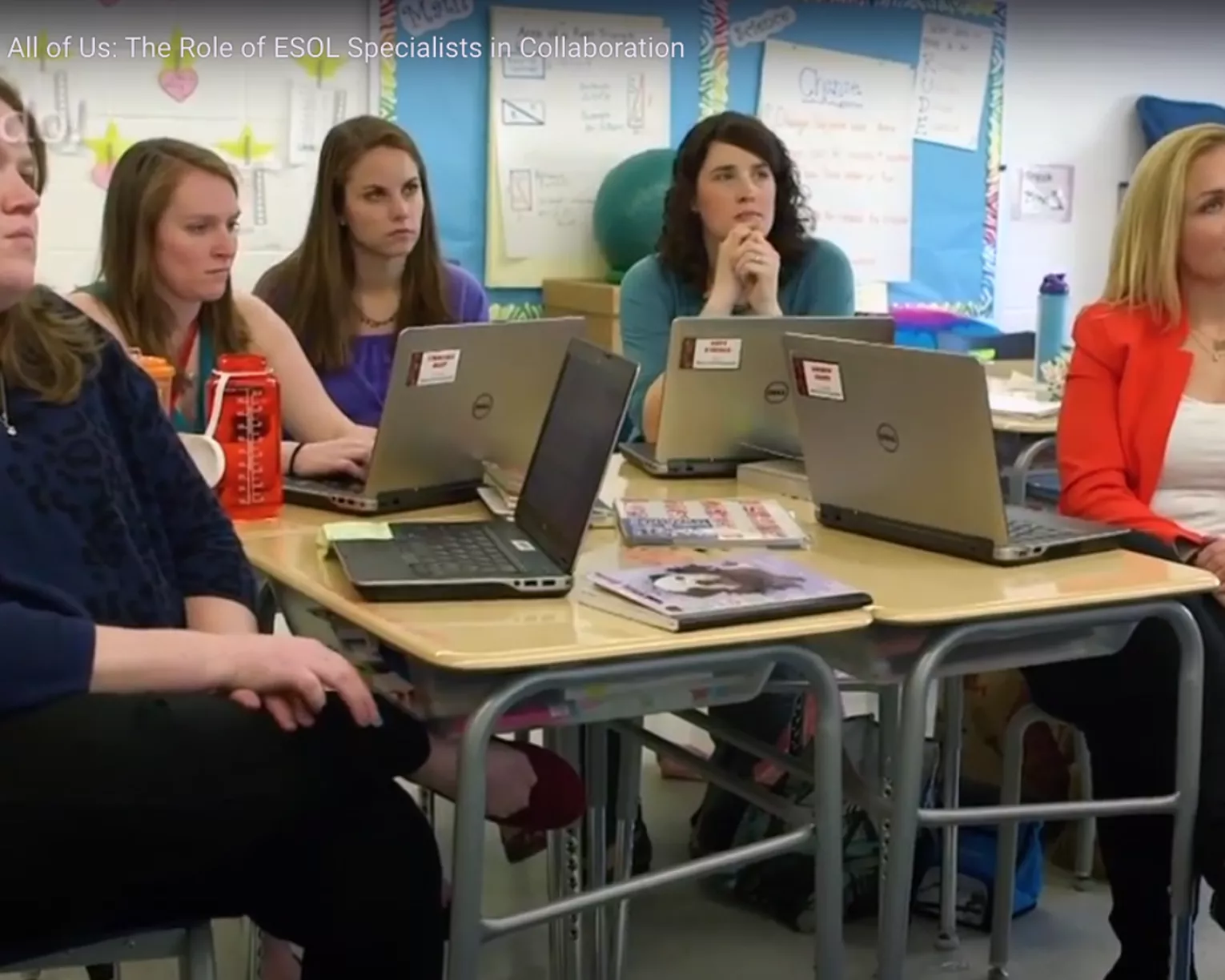As a paraprofessional who works with English language learners (ELLs), you have an important role to play in supporting your students! Here are some tips that will help you succeed, compiled from the following veteran educators:
- Joni Anderson, ELL Paraprofessional
- Ingrid Miera, ELL Paraprofessional
- Michelle Lawrence Biggar, ELL Educator
Getting Started
1. Get to know your students
Getting to know your students is an important first step towards helping them to succeed in the classroom. Start by learning your students’ names and how to pronounce them correctly. (Many ELLs will not correct a teacher who mispronounces their name.) In addition, use positive body language, remember to smile, and get to know your students’ strengths and interests. Small steps can go a long way in making students comfortable and open to working with you.
2. Welcome students’ cultures and languages
Build trust by letting students know that their cultures and languages are welcome in the classroom. You can do this by finding out where your students are from and what language(s) they speak at home, asking them to teach you a greeting in their language, and inviting them to share information about their cultures.
3. Learn more about students’ language proficiency levels
Having information about your students’ language background and proficiency can help you make more informed choices about instruction. Start by finding out how much schooling your students have had and how strong their literacy skills are in their heritage languages.
In addition, look for information on students’ English language proficiency levels in the following areas: reading, writing, speaking, and listening. You should be able to find this information from the classroom or ELL teacher. Keep in mind that students may be stronger in one skill than another and that it is common for new students, particularly at the beginning level, to experience what experts call a silent period.
4. Help students understand how the classroom works
Help students understand classroom routines and expectations through the use of visuals, schedules, and assistance in tasks such as learning to use a locker. Keep in mind that this support will be especially important for newcomers and students with interrupted education. In addition, ensure that students are able to participate in community building or social and emotional learning activities happening in the classroom.
5. Identify social and emotional issues and needs
As with many students, there may be a variety of factors impacting students’ lives in and out of the classroom, including mental health, bullying, food security, housing, clothing, medical care, or other concerns. If students need additional support in these areas, bring issues to the attention of a classroom teacher, ELL specialist, social worker, or administrator.
Classroom Support
6. Provide targeted academic support
Students will need different kinds of academic support depending on a range of factors. Some things you can do include modeling, restating questions or instructions, checking for comprehension with open-ended questions, explaining how to navigate classroom materials, and ensuring that students understand assignments correctly.
7. Learn about best practices for teaching ELLs
The more you know about best practices for teaching ELLs, the more tools you will have in your toolbelt. These practices include using visuals with ELLs, connecting to and building background knowledge, selecting and teaching key vocabulary, helping students develop academic language, supporting students in peer learning, and providing daily opportunities for speaking, writing, reading, and listening across content areas.
8. Use students’ languages as a resource
Students’ languages are a valuable resource. Even if you don't speak those languages, you can tap into them by teaching students to recognize cognates (words that are related between languages), using bilingual glossaries, looking for books and other materials in students’ languages, encouraging students to use their own languages in note-taking, and giving students a chance to use their own languages in small groups before sharing key ideas with the class.
9. Support students in collaborating effectively and appropriately
American culture values individual achievements and independence. Many of the cultures your students will come from, however, focus on working together for the good of the group. This is a tremendous strength as students are likely to enjoy working together in peer groups and on projects. However, it’s also important to ensure they understand why they shouldn’t copy or plagiarize and that there are penalties for doing so.
10. Steer students toward independence
ELLs, especially those at the beginning level, may be dependent on those who are supporting them. While it's necessary to provide students the support they need, they will eventually need to learn how to do things on their own. Encourage students to try something new and build them up to independent work. You can also use the “We do, you do, I do” model of gradual release where students build up to working independently.
Collaborating with Teachers and Specialists
11. Get to know the teacher in the classroom
Take the time to get to know your partner teacher and discuss your teaching styles and expectations. Set up a time to discuss details such as whether you will be providing one-on-one support or working in small groups, where you will be in the classroom, if you will be providing language support and what that will look like, which meetings you might need to attend, and your role during assessments.
It is possible that you will have more experience in working with ELLs than your partner teacher. Where possible, share your suggestions and observations — the teacher can benefit from your insights! If your working relationship doesn't allow for that kind of feedback, however, consider asking for support from a supervisor or administrator to improve the situation.
12. Establish clear communication procedures
Establishing open and clear communication is crucial to any kind of partnership. Some things you might wish to discuss early are how you both prefer to communicate and how to handle ongoing communication. In addition, share any other roles and responsibilities you have and work together to find solutions to scheduling challenges.
13. Determine your role in communicating with students and families
You may have an important role to play in communicating with students and families, especially if you are bilingual. However, you should not be relied upon for translation or interpretation if that is not part of your official job description and training. If you find that others are calling upon you for interpretation and it's interrupting your class time, raise the issue with a supervisor or administrator.
Note: See more in this helpful chart about the difference between bilingual staff and interpreters. Also keep in mind that schools are legally required to provide families with information in their languages. If you feel that appropriate language access is not being provided, bring your concern to an administrator.
Professional Growth and Advocacy
14. Attend ELL professional development and training
Look for opportunities for training through your school and district, as well as at the regional and state level. In addition, connect with the ELL department in your school and district so you don't miss new opportunities. If you are running into obstacles in accessing training, share detailed examples of how ongoing professional development has helped you strengthen your practice and the difference it has made in your work with ELLs. In addition, you may wish to ask for support from your colleagues, supervisor, administrators, or union representatives.
Finally, to learn more about what is required for paraprofessionals serving ELLs, search for current ELL paraprofessional job listings online, even if they are outside of your district. You can see how different positions are structured and what responsibilities they include.
15. Lift up your strengths
It's important for paraprofessionals to lift up their work and strengths. You can do so by sharing success stories and examples of collaboration, building community among other paraprofessionals, and connecting with the paraprofessional/ESP union in your district for additional opportunities and support.
Downloads
Suggested Further Reading
Are you an affiliate?



